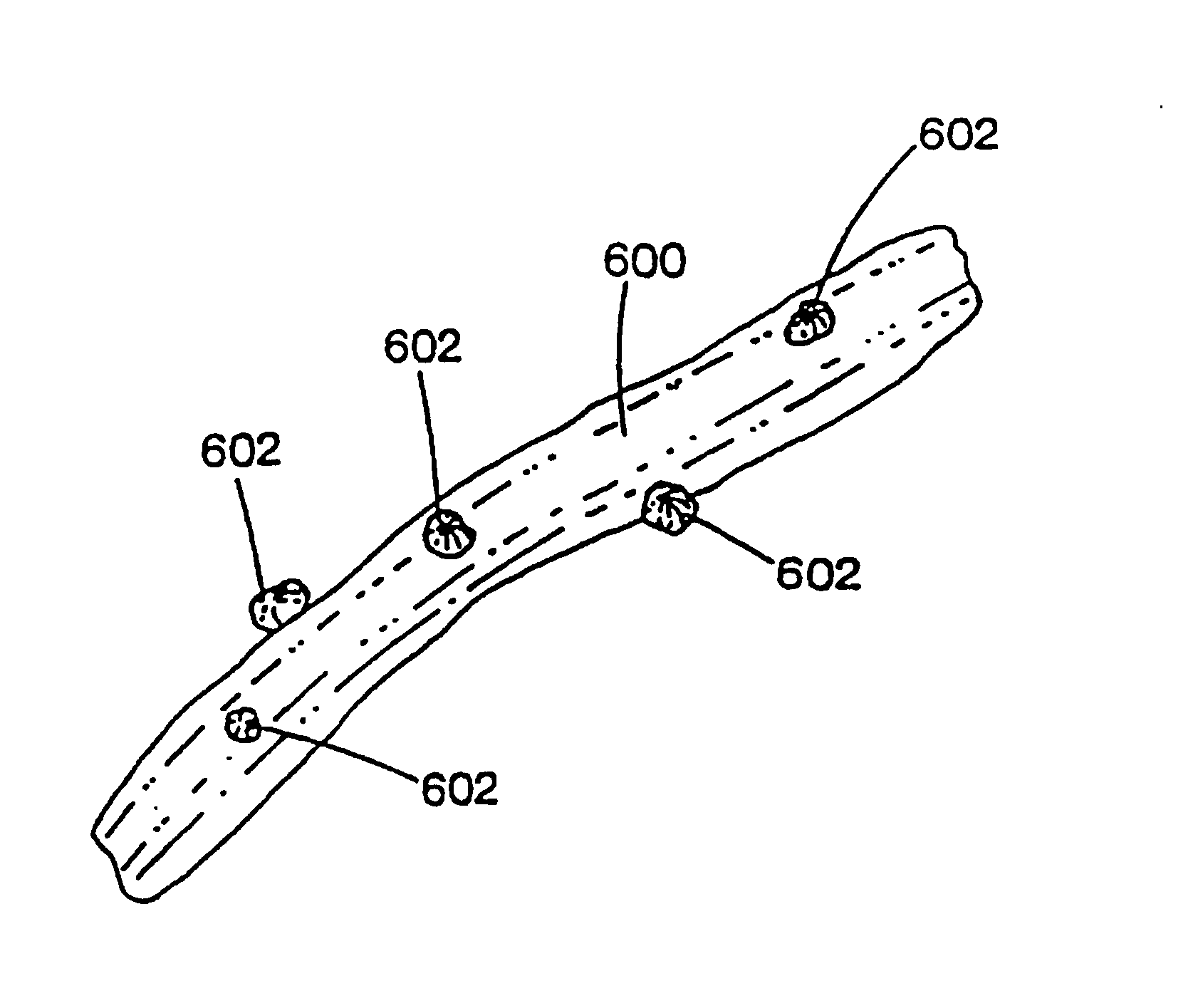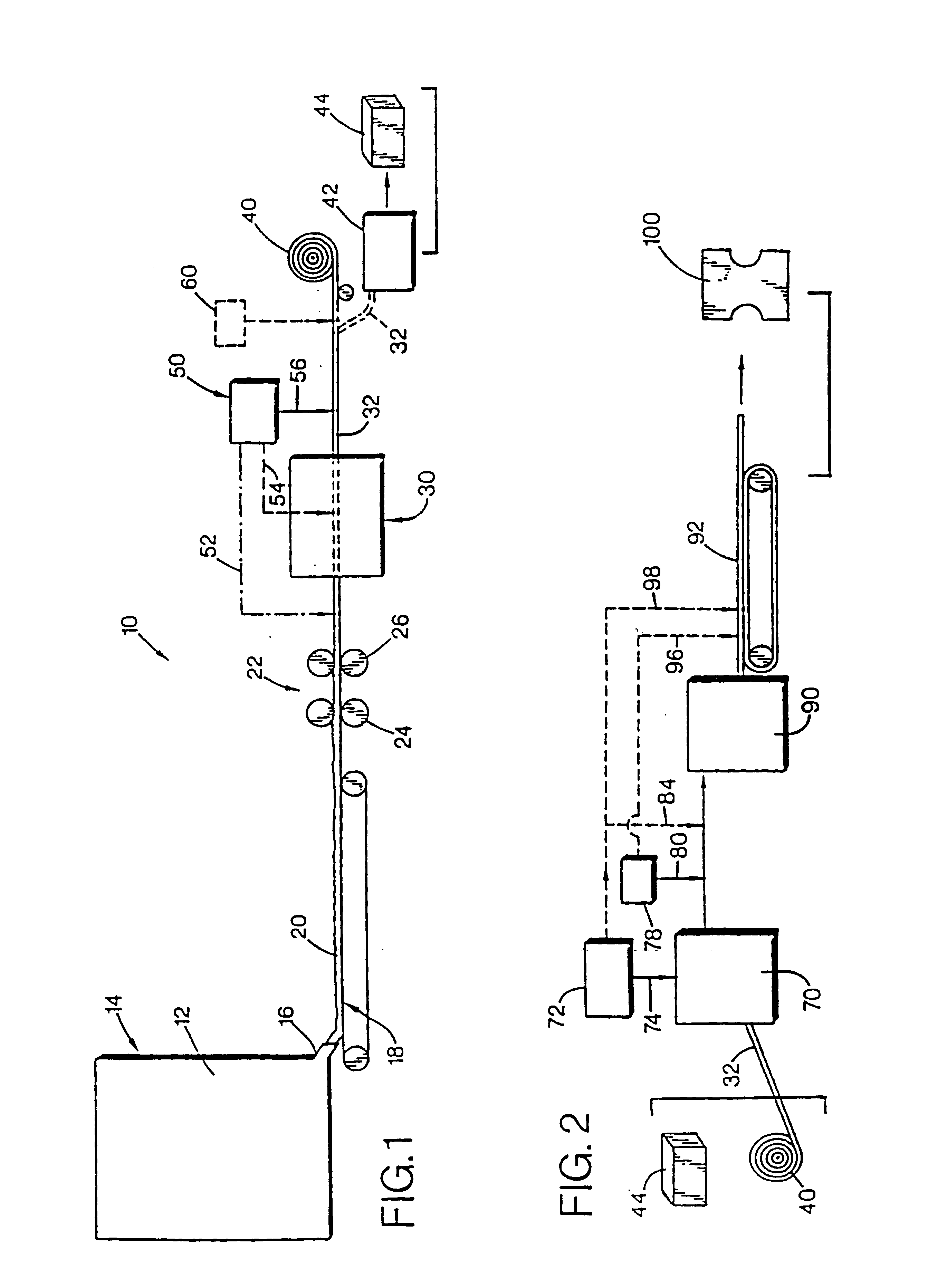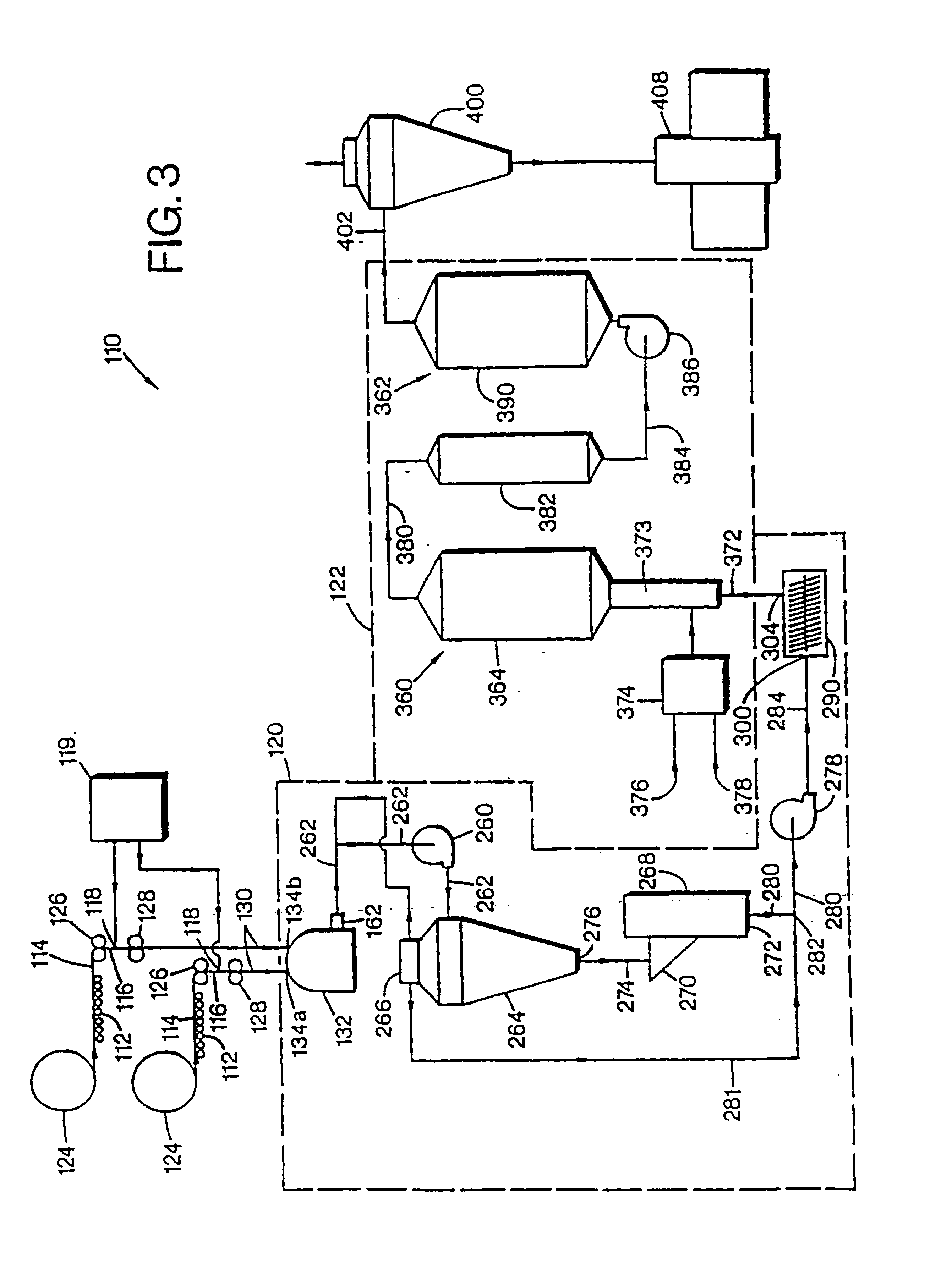Method of binding particles to binder treated fibers
a technology of fibers and binding particles, applied in the field of binding particles to fibrous materials, can solve the problems of physical dislocation of superabsorbent materials from cellulosic fibers, reducing the absorption efficiency of superabsorbent materials, so as to reduce particle wastage, reduce particle wastage, and increase the absorption efficiency of products.
- Summary
- Abstract
- Description
- Claims
- Application Information
AI Technical Summary
Benefits of technology
Problems solved by technology
Method used
Image
Examples
example 1
[0124]A 321 gram amount of NB-416 southern bleached kraft fluff obtained from Weyerhaeuser Company may be air-entrained in a blender-like mixing device and 100 grams of poly(caprolactone)diol (average molecular weight 2000, supplied by Aldrich Chemical Company of Milwaukee, Wis.) dissolved in 100 ml of deionized water may be sprayed onto the fluff as a binder. Then 435 grams of starch graft polyacrylate hydrogel fines (IM 1000F; supplied by Hoechst-Celanese of Portsmouth, Va.) may be added and mixed. The product may then be removed from the blender, and spread out in a fume hood to dry overnight. The resulting product may then be airlaid on a small airlay line, from M & J Machines (of Horsens, Denmark) and thermobonded at 140° C. for one minute to produce a web containing 40% superabsorbent particles (SAP) attached to the individualized fibers. This binder has a low melting point, hence raising the temperature to 140° C. melted the binder and allows it to flow over the fibers and pa...
example 2
[0125]A 321 gram amount of southern kraft fluff was air-entrained in a blender-like mixing device and 154 grams of a 65% solution of polyacrylic acid (average molecular weight=2,000; supplied by Aldrich Chemical Company of Milwaukee, Wis.) diluted with 100 ml of deionized water was sprayed onto the fluff. Then 435 grams of polyacrylate hydrogel (FAVOR 800 supplied by Stockhausen of Greensboro, N.C.) was added into the mixing device and mixed with the fluff and polyacrylic acid binder. The product was removed and spread out to dry and then fed to a hammermill with a three-eighths inch round hole screen and shunted to a small airlay line to produce a web containing 40% SAP attached to the individualized fibers.
example 3
[0126]A 321 gram amount of southern bleached kraft fluff is air-entrained in a blender-like mixing device and 100 grams of polyglycine (molecular weight=5,000-15,000; supplied as a dry powder by Sigma Chemical Company of St. Louis, Mo.) diluted with 100 ml of deionized water is sprayed onto the fluff. Then 435 grams of starch graft polyacrylate hydrogel fines (IM 1000F; supplied by Hoechst-Celanese of Portsmouth, Va.) is added and mixed. The product is removed and spread out in a fume hood to dry overnight. The resulting product is fed into a Fitz hammermill with a three-eighths inch round hole screen and shunted to a small M & J airlay line to produce a web containing 40% SAP attached to the fibers.
PUM
| Property | Measurement | Unit |
|---|---|---|
| temperature | aaaaa | aaaaa |
| temperature | aaaaa | aaaaa |
| density | aaaaa | aaaaa |
Abstract
Description
Claims
Application Information
 Login to View More
Login to View More - R&D
- Intellectual Property
- Life Sciences
- Materials
- Tech Scout
- Unparalleled Data Quality
- Higher Quality Content
- 60% Fewer Hallucinations
Browse by: Latest US Patents, China's latest patents, Technical Efficacy Thesaurus, Application Domain, Technology Topic, Popular Technical Reports.
© 2025 PatSnap. All rights reserved.Legal|Privacy policy|Modern Slavery Act Transparency Statement|Sitemap|About US| Contact US: help@patsnap.com



